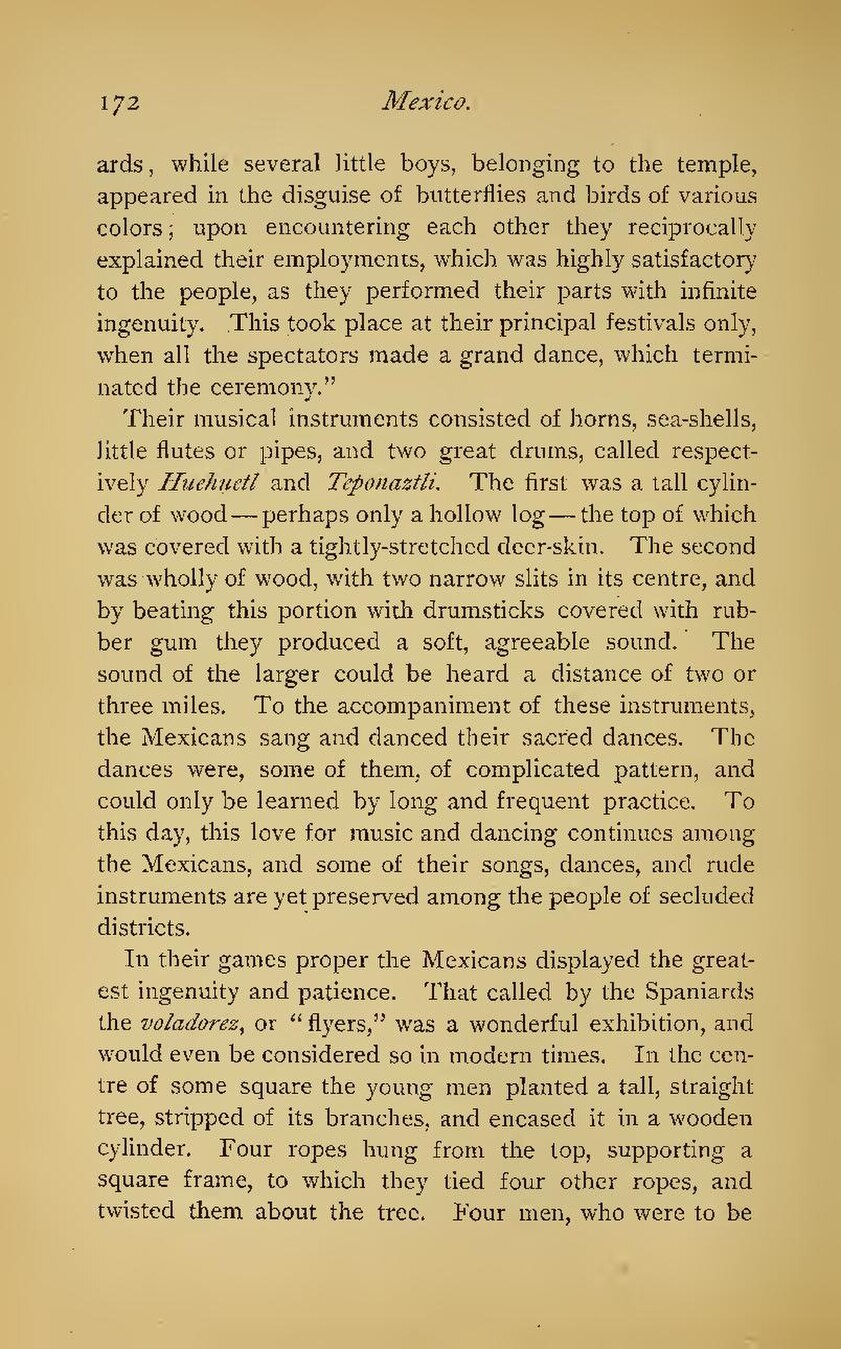ards, while several little boys, belonging to the temple, appeared in the disguise of butterflies and birds of various colors upon encountering each other they reciprocally explained their employments, which was highly satisfactory to the people, as they performed their parts with infinite ingenuity. This took place at their principal festivals only, when all the spectators made a grand dance, which terminated the ceremony."
Their musical instruments consisted of horns, sea-shells, little flutes or pipes, and two great drums, called respectively Huehuetl and Teponaztli. The first was a tall cylinder of wood—perhaps only a hollow log—the top of which was covered with a tightly-stretched deer-skin. The second was wholly of wood, with two narrow slits in its centre, and by beating this portion with drumsticks covered with rubber gum they produced a soft, agreeable sound. The sound of the larger could be heard a distance of two or three miles. To the accompaniment of these instruments, the Mexicans sang and danced their sacred dances. The dances were, some of them, of complicated pattern, and could only be learned by long and frequent practice. To this day, this love for music and dancing continues among the Mexicans, and some of their songs, dances, and rude instruments are yet preserved among the people of secluded districts.
In their games proper the Mexicans displayed the greatest ingenuity and patience. That called by the Spaniards the voladores, or "flyers," was a wonderful exhibition, and would even be considered so in modern times. In the centre of some square the young men planted a tall, straight tree, stripped of its branches, and encased it in a wooden cylinder. Four ropes hung from the top, supporting a square frame, to which they tied four other ropes, and twisted them about the tree. Four men, who were to be
